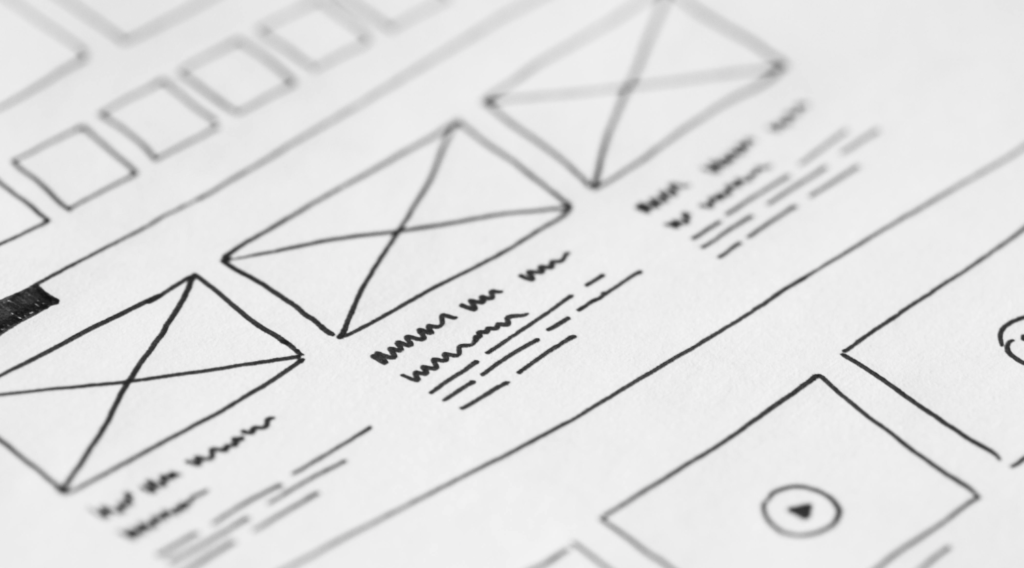

The Digital Ethnography Research Workshop (DiFE) project aimed to modernize how ethnographic research is taught and examined. For that purpose, DiFE was envisioned as an immersive platform that would engage students, promote collaborative research, and provide a seamless learning journey. The platform to be developed is based on the archive for research projects already developed by the
working group (efo.uni-siegen.de) and is significantly developing it further in terms of content and structure.



Photos of some pages from efo.uni-siegen.de
Primary characteristics of good website is—usable, equitable, enjoyable, and useful
If a website is usable, it means the design, structure, and purpose of the website is clear and easy to use.
For evaluating that I ask questions like:
Is everything in the design easy to find?
Is the design’s functionality easy to understand?
Can users accomplish specific tasks within the design?
Vision:
In this phase we have done: Interview, observation and use different tools to understand the user.





Who is experiencing the problem on DiFE?
Knowing the students’ and educators’ backgrounds is crucial for creating a platform that effectively supports ethnographic research.
What are the pain points on the current platform?
Identifying these challenges early ensures that the redesign tackles real obstacles to enhance user engagement and learning.
Where are users interacting with DiFE?
Understanding the physical contexts—classrooms, libraries, or home offices—helps shape a design that adapts to diverse learning environments.
When do users face these issues?
Recognizing the timing, whether during collaborative projects or independent study, aids in designing solutions that meet users at critical moments.
Why is solving these problems important?
Knowing how these issues impact the research experience clarifies the importance of an effective, intuitive platform.
How do users reach their goals on DiFE?
Mapping out their journey provides insights into structuring DiFE to support seamless, goal-oriented navigation and collaboration.




By employing this detailed and iterative Design Thinking process, the team successfully transformed efo into DiFE—a platform designed to support an engaging, collaborative, and effective environment for ethnographic research and learning.

Previous Website: https://efo.uni-siegen.de/

Current Website: https://dife.uni-siegen.de/
Reflecting on the journey of redesigning the DiFE platform, it feels like revisiting a year-long adventure in understanding, creativity, and problem-solving. At the start, the task felt daunting: reimagining an outdated platform that students struggled to navigate and educators found limiting. Yet, through every phase—from initial brainstorming to the final launch—each lesson I picked up added to my growth as both a designer and team member.
It all started with empathy, which became the heartbeat of our process. To truly redesign efo, we needed to see it from our users’ eyes. Through interviews, we walked alongside them, understanding their frustrations and hopes for an ideal platform. I learned how vital it is to look beyond the data and statistics—to really listen and see the “why” behind every click, every complaint, every suggestion.
As we transitioned to the Define phase, empathy turned into clarity. Mapping out user pain points allowed us to set a clear problem statement: “How might we create an engaging, collaborative space that empowers users?” This question grounded every idea and decision that followed. Brainstorming sessions were like a rapid-fire round of creativity. Some ideas were wild, others simple, but every suggestion aimed to bring DiFE closer to what students and professors needed. Here, I learned the value of every voice, seeing how each team member’s insights could take our solution in new and exciting directions.
One of the most challenging, yet rewarding, stages was prototyping. Building wireframes in Figma and sketching layouts were more than technical exercises—they were tangible steps toward a vision. Prototyping taught me patience, how every detail counts, and the importance of testing. Seeing our design in users’ hands, watching them navigate the interface, stumble, and give honest feedback was humbling. I realized that what seems like a minor tweak in color or layout can make a big difference in how someone experiences a platform.
Testing brought everything full circle, teaching me that design is never really “finished.” Observing users navigate our prototype highlighted areas that still needed refinement, and every tweak made the experience smoother. Each test session reminded me that the user experience is a journey, not just a destination.
In the end, redesigning DiFE wasn’t just about building a platform; it was about building connections, listening deeply, and creating something meaningful. Through DiFE, I learned that good design is more than functional—it’s intuitive, collaborative, and empathetic. This experience has reshaped my approach to design, teaching me that with every new project, there’s a story to unfold and a user journey to bring to life.
Our journey to redesign DiFE was full of challenges that, at first, seemed overwhelming. The initial efo platform was outdated and frustrating for students and educators, with poor navigation and limited collaboration features. But as we kicked off with a Design Thinking approach, empathy guided us to the core of these issues. By interviewing users like Ronald, the student, and Professor Mitchell, we saw their struggles firsthand—this was a game-changer.
Through prototyping in Figma, each challenge became an opportunity to learn. Adjusting layouts, refining search functions, and testing usability were rigorous but rewarding steps. Testing with real users revealed where our design needed further tweaks. Watching them interact, struggle, and then seamlessly flow through the platform reminded us that even small adjustments had huge impacts.
Ultimately, overcoming these obstacles was more than technical—it was about creating something truly intuitive and collaborative. Every challenge became a milestone, turning DiFE into a user-friendly space that empowers its community.